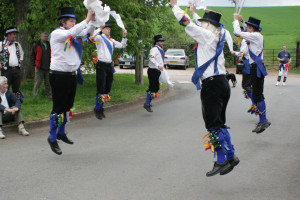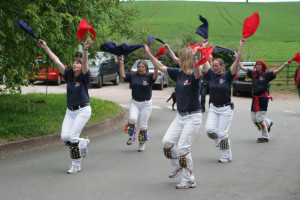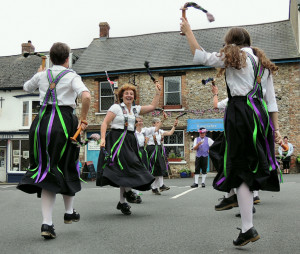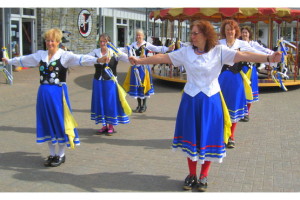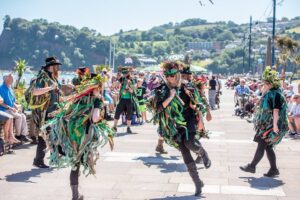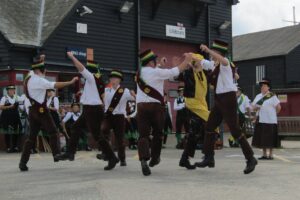No-one really knows the origin of Morris Dancing. The earliest written record of it is from 1448 and we know it was danced at the Tudor court and was enjoyed by Henry VIII and his daughter Queen Elizabeth. We also know that women have always done it despite what people say to us. It was suppressed, along with a lot of other enjoyable things, by the Puritans, but survived into the Restoration. A lot of the dances and tunes were collected and recorded by Victorians such as Cecil Sharp and Mary Neal. A lot of the rest is speculation…
One theory is that the word “Morris” comes from “Moorish” but it is uncertain whether this is because the dance was brought to England through contact with the Arab world at the time of the crusades or whether Moorish was just used to mean exotic. Do the sticks represent swords or are they, and the bells, making noises to frighten away evil spirits?
Glory of the West was formed as part of a revival of interest in folk traditions including morris that happened in the 1970s. Today there are four main forms of the morris dance, each with its own style and traditions. Today morris has spread beyond the UK with lots of sides in America and other parts of the world.
The Esperance Morris Book by Mary Neal
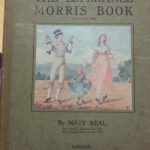
The main style that people think of when they think of Morris dancing and the one that we do, is Cotswold Morris.
This style has its roots in villages of the Cotswold region and surrounding areas. Each village had its own style, and the dancers use hankies (“wavers”) and sticks, with bells worn on the feet or legs. Dances are usually performed in sets of 6 or 8 dancers.
The styles that we dance are from the villages of Ilmington, Wheatley and Ascot-under-Wychwood.
Northwest Morris is associated with the mill towns of North West England. The dancers often use items such as bobbins from the cotton mills or with large decorated hoops called garlands. Sets are frequently larger than for Cotswold dances and sides are frequently mixed. The dance was used for processions and teams are often accompanied by large bands with very loud drums!
Border Morris comes from the Welsh Border regions and the dancers usually wear a disguise on their faces, such as face paint, masks or even sunglasses. One theory for this is that they originally disguised themselves so that their employers would not know they were out begging for money. Or maybe it was just to scare the little children. This still works today as there is lots of yelling and exuberance in this style. The costume is often rag coats and dances are usually done with sticks. Some Border Morris teams do not disguise themselves at all and dance “bare-faced.”

